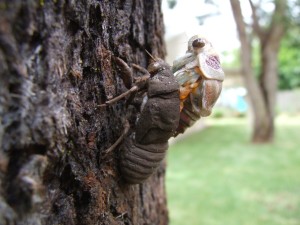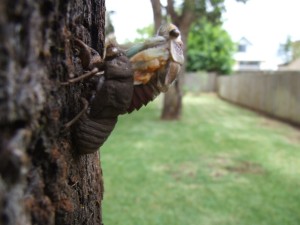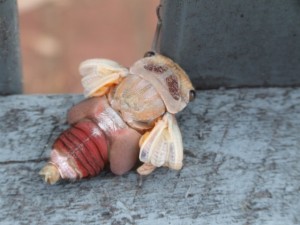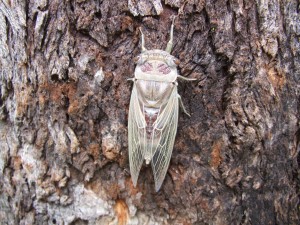On Holidays With Your Kids and... The Cicada!
Author: villaget Date Posted:7 January 2014
So its summer 2013/2014 and you are on on your annual school holiday break with the kids. You travel to your favourite camping spot and are greeted by the most deafening sound of the Cicada! What's that noise your inquisitive children ask? Then your kids find hundreds of shells stuck to trees...and you get asked even more questions - but you still can't really explain all the details!
I thought I would share these pictures as they are rarely seen by us mums and dads and cicadas have always created such fascination and intrigue for children of all ages. So, why this post? Well, besides loving toys I also have a slight bent towards agriculture, entomology and photography and I also see a huge importance in encouraging children to spend time outside - to play, to look, to learn, to explore, to touch, to feel, to smell the outdoors and to also respect other creatures they may find that share this amazing planet we call earth!
So, here are some basics on the cicada.....



 The cicada out of shell however its wings are not yet fully opened and dried.
The cicada out of shell however its wings are not yet fully opened and dried.
 Now an adult they live only from a few days to around 2-4 weeks during which time they need to mate and lay lay eggs if they are female to keep the cycle going again!
Photos: Courtesy of my mum
To read more about cicadas go to <a href="http://www.abc.net.au/science/articles/2001/02/17/2822486.htm">http://www.abc.net.au/science/articles/2001/02/17/2822486.htm
Now an adult they live only from a few days to around 2-4 weeks during which time they need to mate and lay lay eggs if they are female to keep the cycle going again!
Photos: Courtesy of my mum
To read more about cicadas go to <a href="http://www.abc.net.au/science/articles/2001/02/17/2822486.htm">http://www.abc.net.au/science/articles/2001/02/17/2822486.htm
Lifecycle Explained
1. Egg stage
The female mates, then lays several hundred eggs by creating slits in a tree. She deposits around 12 at a time before moving to the next spot and depositing more until all have been laid.2. Nymph stage
The eggs stay in this spot for many weeks, and then they hatch into a miniature cicada called a nymph. The nymph falls to the ground and they seek shelter amongst the leaf litter. They then burrow deep into the ground around 10-40cm from the surface. Here they stay for the majority of the lives. They feed on very small tree roots by piercing the root with its long rostrum (much like a straw) which is used to suck sap. Over the months and years they continue to grow, molt their skins and grow some more.3. Adult stage
After anywhere between 9 months and 17 years (depending on the species and the right weather conditions) the cicada nymph will rise to the surface, climb onto a tree and shed its skin for the very last time. From here the cicada can take over an hour to fully emerge and in the mean time it's is vulnerable to hungry predators such as birds.


 The cicada out of shell however its wings are not yet fully opened and dried.
The cicada out of shell however its wings are not yet fully opened and dried.
 Now an adult they live only from a few days to around 2-4 weeks during which time they need to mate and lay lay eggs if they are female to keep the cycle going again!
Photos: Courtesy of my mum
To read more about cicadas go to <a href="http://www.abc.net.au/science/articles/2001/02/17/2822486.htm">http://www.abc.net.au/science/articles/2001/02/17/2822486.htm
Now an adult they live only from a few days to around 2-4 weeks during which time they need to mate and lay lay eggs if they are female to keep the cycle going again!
Photos: Courtesy of my mum
To read more about cicadas go to <a href="http://www.abc.net.au/science/articles/2001/02/17/2822486.htm">http://www.abc.net.au/science/articles/2001/02/17/2822486.htm












